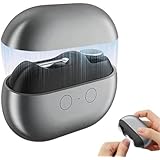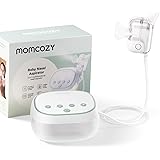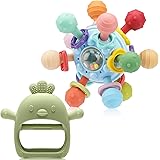Learning essential English vocabulary related to common places like a hospital is extremely beneficial for young learners. This accompanying guide expands upon the video above, providing a deeper understanding of key medical terms and hospital roles, thereby making the acquisition of hospital vocabulary for kids both enriching and comprehensive. It is recognized that familiarizing children with these words can help alleviate anxieties sometimes associated with medical visits, transforming the unknown into something more understandable.
Exploring the Hospital Environment: Key Locations
Within a hospital, various specialized areas are maintained to address different medical needs of patients. These distinct sections play crucial roles in providing effective healthcare services to everyone who requires them.
The Ambulance: First Responders on Wheels
An ambulance is often the very first point of contact for individuals experiencing a medical emergency outside of a hospital setting. This specialized vehicle is equipped with necessary medical tools and personnel, allowing for immediate care to be administered while patients are transported swiftly to the nearest medical facility. Its siren and flashing lights alert others to an urgent situation, clearing the way for a rapid response.
The Emergency Room: Urgent Care Center
Upon arrival at a hospital, many patients with sudden illnesses or injuries are directed to the emergency room, frequently abbreviated as ER. This area is specifically designed to handle critical conditions that require immediate medical attention, operating twenty-four hours a day, seven days a week. It is here that initial assessments are performed and life-saving treatments are often initiated.
The Operating Room: Where Surgeries Take Place
More complex medical procedures, particularly those involving surgery, are conducted in a sterile environment known as the operating room. This highly controlled space is kept meticulously clean to prevent infections, where a team of medical professionals works together to perform intricate operations. Specialized equipment is utilized to ensure the safety and well-being of the patient throughout the surgical process.
The Ward: Patient Care Units
Following initial treatment or surgery, patients requiring ongoing care are typically admitted to a ward. This is a section of the hospital where multiple patients are accommodated in rooms, allowing nurses and doctors to regularly monitor their recovery and administer necessary medications. Various types of wards exist, such as pediatric wards for children or maternity wards for new mothers, each tailored to specific patient populations.
The Doctor’s Office: Consultations and Check-ups
For less urgent matters or routine check-ups, appointments are usually made at a doctor’s office, which can be located within the hospital or as part of a separate clinic. This is where doctors meet with patients to discuss their health concerns, conduct examinations, and provide advice on maintaining good health. Preventative care and early diagnosis are important aspects of visits to this setting.
Key People in the Hospital: Roles and Responsibilities
Hospitals are staffed by a dedicated team of professionals, each playing an indispensable role in patient care. Understanding these roles helps young learners appreciate the coordinated effort involved in healthcare.
The Doctor: Expert Healers
The doctor is a highly trained medical professional responsible for diagnosing illnesses, prescribing treatments, and performing procedures. They possess extensive knowledge of the human body and various diseases, working tirelessly to restore health. A doctor’s white coat is frequently worn as a symbol of their profession, signifying cleanliness and authority in the medical field.
The Nurse: Compassionate Caregivers
Working alongside doctors, the nurse provides direct patient care, administering medications, monitoring vital signs, and assisting with daily needs. Their role involves a significant amount of compassion and communication, ensuring patients feel comfortable and informed about their treatment plans. Nurses are often the primary point of contact for patients and their families, offering comfort and support throughout their hospital stay.
The Patient: Individuals Receiving Care
A patient is any individual who receives medical care, treatment, or attention from a doctor or nurse. These individuals are typically following instructions provided by healthcare professionals, with the ultimate goal of improving their health. It is the central mission of the entire hospital staff to ensure patients receive the best possible care for their recovery and well-being.
Essential Medical Tools and Procedures
Certain instruments and actions are fundamental to medical practice, and learning about them is a key part of expanding medical English vocabulary for kids.
The Stethoscope: Listening to the Body
A stethoscope is a classic medical instrument utilized by doctors and nurses to listen to internal sounds of the body, particularly those made by the heart and lungs. This helps healthcare providers assess the functioning of these vital organs, aiding in the diagnosis of various conditions. Its distinctive design allows for the amplification of subtle sounds, which are otherwise imperceptible.
The Thermometer: Measuring Body Temperature
When someone is feeling unwell, their body temperature is frequently checked using a thermometer. This device precisely measures heat, indicating whether a fever is present, which is often a sign of infection or illness. Understanding this reading helps doctors determine the severity of a patient’s condition and guide appropriate treatment decisions.
The Injection: Administering Medicine
Sometimes, medicine needs to be delivered directly into the body using a needle, a process known as an injection. Nurses are commonly responsible for giving injections, which can provide vaccines to prevent diseases or deliver medications that work quickly. While it may cause a brief pinch, injections are an effective way to help patients get better or stay healthy.
The Importance of Care and Following Instructions
It is universally understood that doctors and nurses take good care of patients, dedicating their skills and time to ensuring recovery. Furthermore, patients are expected to follow doctor’s instructions diligently, as these guidelines are critical for effective treatment and a smooth recovery process. Adherence to medical advice is a shared responsibility, contributing significantly to positive health outcomes.
Reinforcing this hospital vocabulary for kids through stories, role-playing, and gentle conversations can empower children with knowledge and confidence. Understanding these foundational terms in English is an excellent step in their language learning journey, preparing them for more complex concepts in the future.











